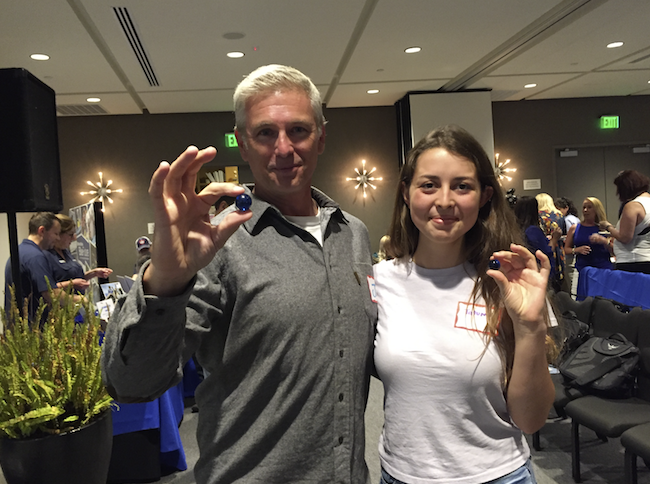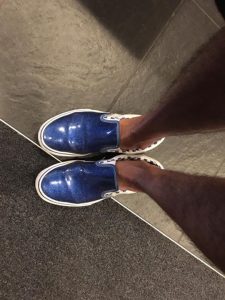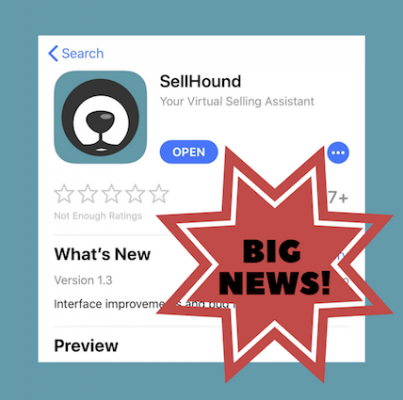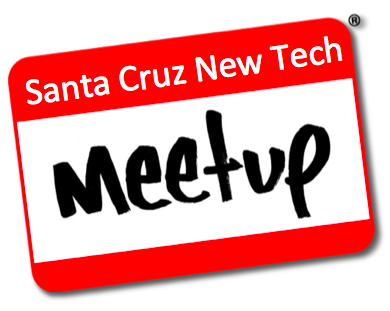Companies
Q&A: Dr. Wallace J. Nichols on Pre-Tech, Low-Tech, High-Tech

By Tatum Whitehead
High School Student, Pacific Collegiate School
Special to Santa Cruz Tech Beat
September 8, 2017 — Santa Cruz, CA
(Photo above: Wallace J. Nichols and writer Tatum Whitehead hold up their blue marbles at the Santa Cruz New Tech Meetup, 9/7/17. Credit: Sara Isenberg)
Let me introduce myself — I’m a high school intern writing for Santa Cruz Tech Beat. I am thrilled to have this opportunity. I’m also slightly amused that the guest of honor at this event is Dr. Wallace J. Nichols who happens to be the founder of Slow Coast, a quirky little shop up in Davenport where I worked this past summer.
Blue Tech
The theme of this month’s meetup was Blue Tech, essentially, water related technology.
Gary Griggs from the UCSC Institute of Marine Sciences kicked off the meeting with a talk about the importance of our oceans. He emphasized the unique geographic and research environment within the Monterey Bay. Gary’s focus on ocean science was a perfect lead-in for Christine Spiten from Blueye Robotics. Visiting Santa Cruz all the way from Norway, she spread the word about her new generation of underwater drones. Each drone mini-sub can be controlled via smartphone and is designed for everyday people to use. You know, everyday people like me! Can I have one? Buoy Labs came and described their home water monitoring system, which can, among other things, let you know when your kids are taking too long of a shower. Hmmm. West Marine Blue Future presented their nonprofit which awards grants to groups teaching marine sciences or maritime skills to youth in the community. They provide children all throughout the nation with an opportunity to connect with water. Craig Jones, an ocean and environmental engineer from Integral Consulting spoke about advances in ocean measuring technology and David Dennis, co-founder of Ventana Surfboards, detailed how he is able to use technology to produce and distribute surfboards made from recycled wood.
Fireside chat turned love fest

Blue Mind, Blue Shoes: Toby Corey wears sparkly ocean blue vans to the Blue Tech meetup. (Source: social media)
The highlight of the evening was a fireside chat turned love fest with Dr. Wallace Nichols and Toby Corey, featuring a distinct lack of fire and a substantial amount of hugging. And a shoe swap. Wallace — who goes by his middle initial J — is a sea turtle biologist with a passion for combining water and neuroscience. His recently released Netflix original documentary, “Resurface,” follows a war veteran and his experience using water to help him heal. Toby, a local clean energy entrepreneur shares J’s passion for water—and has excellent taste in footwear.
I caught up with Dr. Nichols before the meetup and was able to ask him a few questions about who he is and what he does. I also asked him for a raise… just kidding.
TW: I believe you live in the Central Coast region, what attracted you to this area? How has living here impacted you?
WJN: We made a long term decision to live in this region, what we refer to as the Slow Coast, after doing a bit of research. Specifically, we took a long walk from Oregon to Mexico down the coast. Over those four months of trekking and camping along the ocean we narrowed things down and eventually settled on Davenport. More than 15 years later we still love it here. There’s a slower pace than many places, wild natural beauty, access to waves and trails, amazing local organic food and wonderful people. We share our home with friends, family and sometimes strangers from around the world which has enriched our lives. One summer a European family cycling around the world with their four young kids came to stay with us. Our home has been a classroom for many students. The Cousteau’s have crashed our couch. Mick Jagger’s son and Ernest Hemingway’s great granddaughter made a movie at our place. But I’d say the proximity to such a wild, bold and healthy ocean has had the most impact on me personally.
TW: You’re speaking at a tech meetup however your research seems to be more psychology and marine biology focused rather than tech focused. How is what you’re doing related to tech?
WJN: Everything we do involves technology. We track sea turtles across the ocean using satellite telemetry and share the data via social media. EEGs and fMRIs allow scientists to study our “brain on oceans” and better understand why surf therapy works. Ocean drones are giving us access to never seen places at a cost unimaginable a decade ago. We’ve shared a million blue marbles as simple symbols of gratitude. That’s the best low-tech teaching tool I’ve ever known! In 1997 Apple Computers featured our project in their ads and 20 years later we’re still pushing the edge.
TW: You have a best selling book, Blue Mind. What motivated you to write about the benefits of being around bodies of water? How did you go about researching the human water connection?
WJN: My original motivation was that I wanted to read a book that connected the dots between water and neuropsychology. But it hadn’t been written. So I took my research and tried to convince someone else to write it. But I failed at that. So I did what I guess every good entrepreneur does when encountering a vacuum. I did it myself. It was a steep learning curve as my degrees are in Biology, Spanish, Economics Wildlife Ecology and Evolutionary Biology…not neuroscience or psychology. So, we gathered the best and brightest minds in both the brain sciences and the aquatic sciences at a series of annual summits, asked really interesting new questions and listened to what they said. That has evolved into Blue Mind, the book, the annual gatherings, the global movement. The Chinese translation comes out later this year.
TW: Is there a story behind how you came up with the idea of the blue marble?
WJN: Ocean and environmental communication was feeling like a constant barrage to bad news, guilt trips, factoids, percentages and anger to me. It seemed like we had reached the limits of that approach in terms of attracting people to the movement. I was looking for a way to thank people for the small, good things they were doing. Something that would celebrate and recognize our fragile relationship with our unique water planet. So I started giving out blue marbles at lectures and events, sometimes just walking down the street or in the New Leaf checkout line. People loved them, conversations started and they just began to spread. When you get a blue marble you’re meant to pass it on to someone, and so on. Jane Goodall got a marble and so did the Dalai Lama. james Cameron took his to the bottom of the ocean and astronauts held theirs up and compared it to the view of Earth from space. This project has grown into a slow motion perpetual worldwide art project. There’s no budget or leadership and no battery or off switch. Virality is built into the design and blue marbles made of recycled glass are accessible and inexpensive. I’ve learned a lot about marketing and communications by conducting an large scale experiment with no funds!
TW: In Blue Mind, you mention that even a body of water as small as a glass of water can impact your state of being, how does this compare with the impact a larger body of water, say the ocean, would have?
WJN: I’d say there’s a continuum from small to large, from clean to dirty, and accessible to inaccessible. On one end perhaps is a warm, calm bioluminescent night ocean where you’re floating on your back. On the other end is a splash of cool water in your sink. Both are good. Both change our chemistry. But you can’t spend your whole life floating, or surfing, for that matter. Though lots of people do try!
TW: What do you hope the people of the Central Coast will gain from hearing you speak and hearing your message? What do you hope to gain by sharing your message with the Santa Cruz tech community?
WJN: I think my work is basically a reminder of what we know and what we have felt. A little nudge to get in the water and take someone with you. The important message is that people communicate more that healthy oceans and waterways make life possible and also worth living. For many people, water is medicine. It’s romance. It’s play and fun and stress relief. Our ocean is so much more than oxygen, jobs and seafood. We should teach all kids about the cognitive, emotional, psychological, social and spiritual benefits of water. It will make their lives better and, I hope, lead to more restoration and protection of places that need it.
TW: Is there anything else you would like to share with Santa Cruz Tech Beat readers?
WJN: Even if your thing isn’t water, neuroscience and the interesting breakthroughs and insights that seem to emerge almost weekly, can help you do what you do better. Whether that’s personal wellness, creativity, music or solving big problems. Neuroliteracy and ecoliteracy go hand in hand. Technology is helping us understand our brains better and also share what we are learning in compelling ways.
###
If you wish to republish this article, please follow our Terms of Use.
###
Tagged Santa Cruz New Tech Meetup







